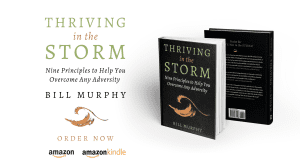Throughout my 23 years in the mortgage industry, I’ve been asked to help many people understand mortgage interest rates like a pro.
For new buyers especially, this can be tricky, but it’s not impossible. Understanding your mortgage rates is essential to putting you in the driver’s seat of your finances. Moreover, knowing what comprises your interest rates can help you make informed decisions that will save you money on your monthly payments.
In this blog, I’m breaking down five key elements that make up your mortgage interest rates. By the end of this blog, you should better understand how your home loan works and what you can do to save big.
Are you ready to learn how your mortgage rates are determined? Great, let’s get started.
1. Your credit score
You guessed it; your credit score is one of the most important factors in helping you understand mortgage interest rates and how they affect your loan.
When you ask me to help you get a mortgage, I’ll first pull your credit score to see what your payment history is like. The higher the credit score, the lower your interest rate and vice versa.
But that’s the entire story. If you have less than ideal credit, it’s possible to raise your score to a point where you could get a more favorable interest rate.
Here’s how:
- Many mortgage lenders offer free credit counseling, should your credit report demonstrate room for improvement. We can dive deep and produce a credit repair plan that will get you into better graces with the right lender. Ask me about this service.
- Don’t open new credit cards, loans, or anything else requiring a credit check. Doing so will only make you seem risky in the eyes of a lender, which will lead to higher rates.
A bonus hack is to use a Federal Housing Authority (FHA) home loan. FHA loans often have lower credit thresholds, as well as smaller down payment sizes. Since the federal government backs these loans, lenders are more willing to work with someone who has less than ideal credit.
2. Down payment size
The more money you put down, the less you have to borrow. Lenders look at your Loan-to-Value ratio, which is also known as your loan’s LTV. Your loan-to-value ratio (LTV) represents the relationship between the size of the loan you take out and the value of the property that secures the loan.
Your LTV compares the size of the loan you’re getting with the value of the home. LTV is usually expressed as a percentage. Lenders use LTV to determine how much risk they’re taking on when they lend to you. They also use it to figure out which loans you’re eligible for based on the size of your down payment or the amount of equity you have.
Something else to keep in mind is the idea of private mortgage insurance (PMI). Once you have 20 percent equity in your home, you’re no longer required to pay PMI. A 20 percent down payment gives you that equity upfront.
Like many things in the world of mortgages, these are all dependent on individual factors. That’s why it’s vital to get in touch with me to know how this could work.
3. Property location & type
What state are you living in? If you’re one of the millions of people navigating the Bay State’s thriving housing market, then we should connect. There is a myriad of reasons why your interest rates could vary.
Are you planning on living in a condo? Is your single-family home at the top of your budget in a particular area? Budgeting time to meet with a local mortgage expert is key to understanding if your dream location will yield dream rates.
4. Term & type of your loan
Do you have a 30-year loan? What about a 15-year loan? Are you using a government-backed mortgage or a private loan?
The length and type of your home loan will go a long way to help you understand mortgage interest rates and their impact on your monthly payments.
Borrowing for a shorter loan term may mean a lower rate. Yet, if you can’t afford to borrow for less than a 30-year term, speak to your Loan Officer about the potential to refinance down the road.
5. The American Economy at-large
Yes, the interest rates you’ve heard announced by the Federal Reserve (FED) have a direct impact on your mortgage rates. Economic policy, U.S. Treasury bonds, and inflation account for a good portion of how interest rates are set.
For example, one of the reasons why interest rates have remained so low throughout the pandemic is because the FED lowered rates through quantitative easing. This decision led many homeowners to refinance and purchase a home in the current competitive housing market.
Keeping an eye open on economic forecasts and general economic news is a great way to plan your next move. Of course, stay in contact with me (or your Loan Officer) to see how macroeconomic policy will impact your home loan. I share this type of content weekly on my YouTube Channel.
Ready to talk rates? I’m ready to talk solutions.
It takes time to understand mortgage interest rates and how they can help put homeownership within reach. The market is still hot, and in times like these, it is imperative that you have a mortgage pro, like myself, on your side who truly looks out for your financial interest at every turn. That is my commitment to you. Now may be the right time to buy. Contact me today to get started!

Share






